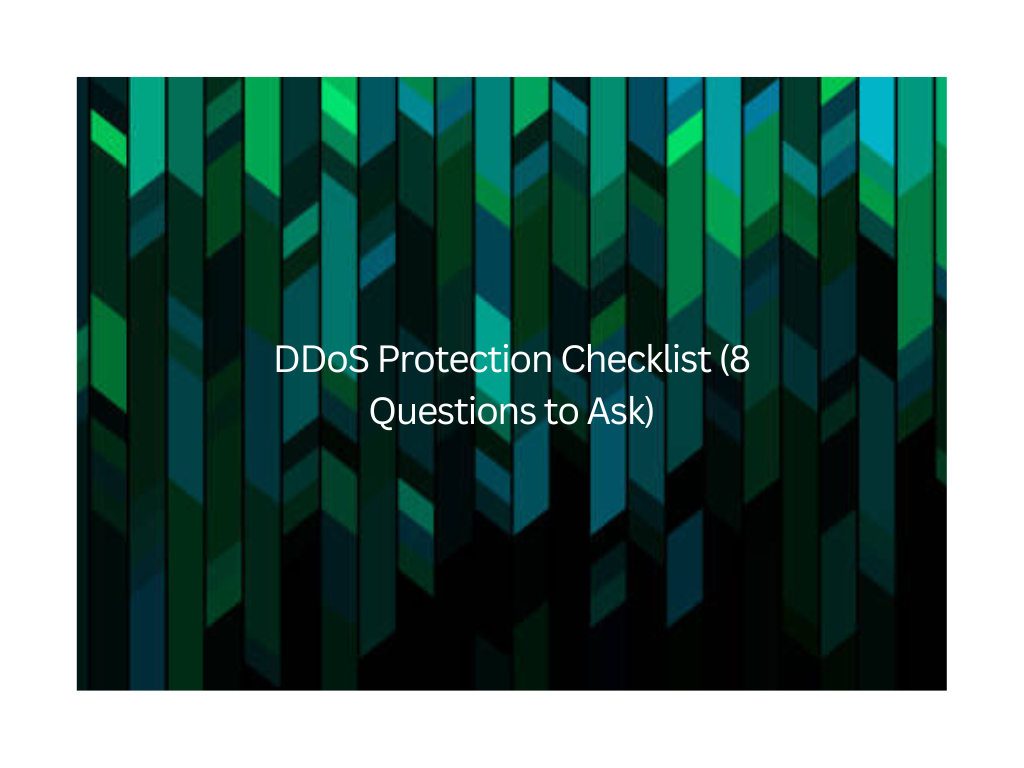Estimated Read Time: 6 minutes
Introduction: The Silent Killer of Business Continuity
In 2025, the internet is faster, smarter—and more dangerous than ever.
According to a recent industry report, DDoS attacks have surged by over 55% in the past year, with some assaults exceeding 1.4 Tbps in scale.
These aren’t just random bursts of traffic; they’re weaponized digital tsunamis engineered to overwhelm your systems, disrupt operations, and destroy customer trust.
Whether you run an e-commerce site, a financial portal, or a SaaS platform, downtime is the new disaster. Every minute offline could mean thousands—or millions—lost.
So before it’s too late, here’s your Ultimate DDoS Protection Checklist — 8 critical questions every CIO, CTO, and security leader must ask to ensure their business isn’t the next headline.
Question 1: Can Your Network Handle Volumetric and Application-Layer Attacks?
DDoS attacks come in different shapes and sizes.
- – Volumetric attacks flood your bandwidth.
- – Application-layer attacks (Layer 7) target your web servers directly.
If your protection only covers one of these, your defense is incomplete.
Haltdos Advantage: Haltdos Anti-DDoS defends against both volumetric and Layer 7 attacks, using intelligent traffic filtering and auto-scaling cloud scrubbing centers.
Question 2: Is Your DDoS Mitigation Automated or Manual?
Manual responses can’t match the speed of modern DDoS campaigns. Attacks today last minutes, not hours, and automation is non-negotiable.
Haltdos Advantage: Haltdos’ AI-driven mitigation detects and neutralizes attacks in real time—without waiting for human intervention.
Question 3: Do You Have Real-Time Visibility and Analytics?
You can’t defend what you can’t see.
Many enterprises struggle because they lack real-time visibility into incoming traffic, making it impossible to separate genuine spikes from malicious floods.
Haltdos Advantage: A single intuitive dashboard gives real-time monitoring, threat analytics, and traffic insights, allowing teams to act decisively.
Question 4: Can Your Solution Scale During Peak Traffic?
Your DDoS protection should scale automatically with legitimate user growth. Some solutions fail under peak load—ironically making you vulnerable even when you’re successful.
Haltdos Advantage: Haltdos’ cloud-native infrastructure automatically scales protection capacity, ensuring uptime even under sudden surges.
Question 5: Does Your Protection Cover Both Network and Application Layers?
Most attacks now occur at the application layer (Layer 7). But true resilience means defending from Layer 3 to Layer 7 seamlessly.
Haltdos Advantage: Combined Network DDoS + Application Security (WAF/WAAP) ensures holistic protection from every angle.
Question 6: Do You Have 24×7 SOC Support?
Cyber threats don’t clock out at 6 PM.
Without continuous monitoring, an attack that starts at midnight could cripple your systems by morning.
Haltdos Advantage: Haltdos’ 24×7 Security Operations Center (SOC) continuously monitors, mitigates, and reports incidents, ensuring uninterrupted protection.
Question 7: Is Your Solution Tested Against Modern Botnets?
The rise of IoT and AI-powered botnets means attacks are more distributed and unpredictable than ever. Traditional filters can’t keep up.
Haltdos Advantage: Using machine learning and behavioral analysis, Haltdos identifies and neutralizes sophisticated botnet traffic before it causes harm.
Question 8: Is Your DDoS Solution Made for India — and Data Sovereign?
Many global DDoS providers route your data through international networks, raising compliance and latency issues.
For Indian enterprises, data sovereignty is now a regulatory and strategic priority.
Haltdos Advantage: Haltdos is a Made in India cybersecurity company, with locally hosted infrastructure ensuring compliance, performance, and sovereignty.
Bonus Tip: Combine DDoS Protection with Application Security
Most DDoS attacks now overlap with application exploits like SQL injection or bot abuse.
A modern cybersecurity strategy must unify DDoS protection + WAF + Bot Protection + API Security for end-to-end resilience.
Haltdos offers this as an integrated security suite, built for enterprises with global ambitions.
Final Thoughts: Don’t Wait for the Wake-Up Call
Every CIO knows — it’s not a question of if an attack will happen, but when.
The businesses that survive aren’t the ones that react fastest, but the ones that prepare early.
✅ Audit your DDoS protection today.
✅ Ask the 8 questions above.
✅ And if you can’t confidently tick every box—Haltdos can help.
Why Haltdos?
- Comprehensive Network & Application-Layer Protection
- AI-Powered Real-Time Mitigation
- Centralized Monitoring Dashboard
- Seamless Integration with WAF, API, and Bot Protection
- 100% Made in India | Trusted by Enterprises Across Sectors
🚀 Ready to Stay Always-On?
Don’t let your uptime depend on luck.
Talk to our experts today for a free DDoS risk assessment and secure your infrastructure before it’s too late.




